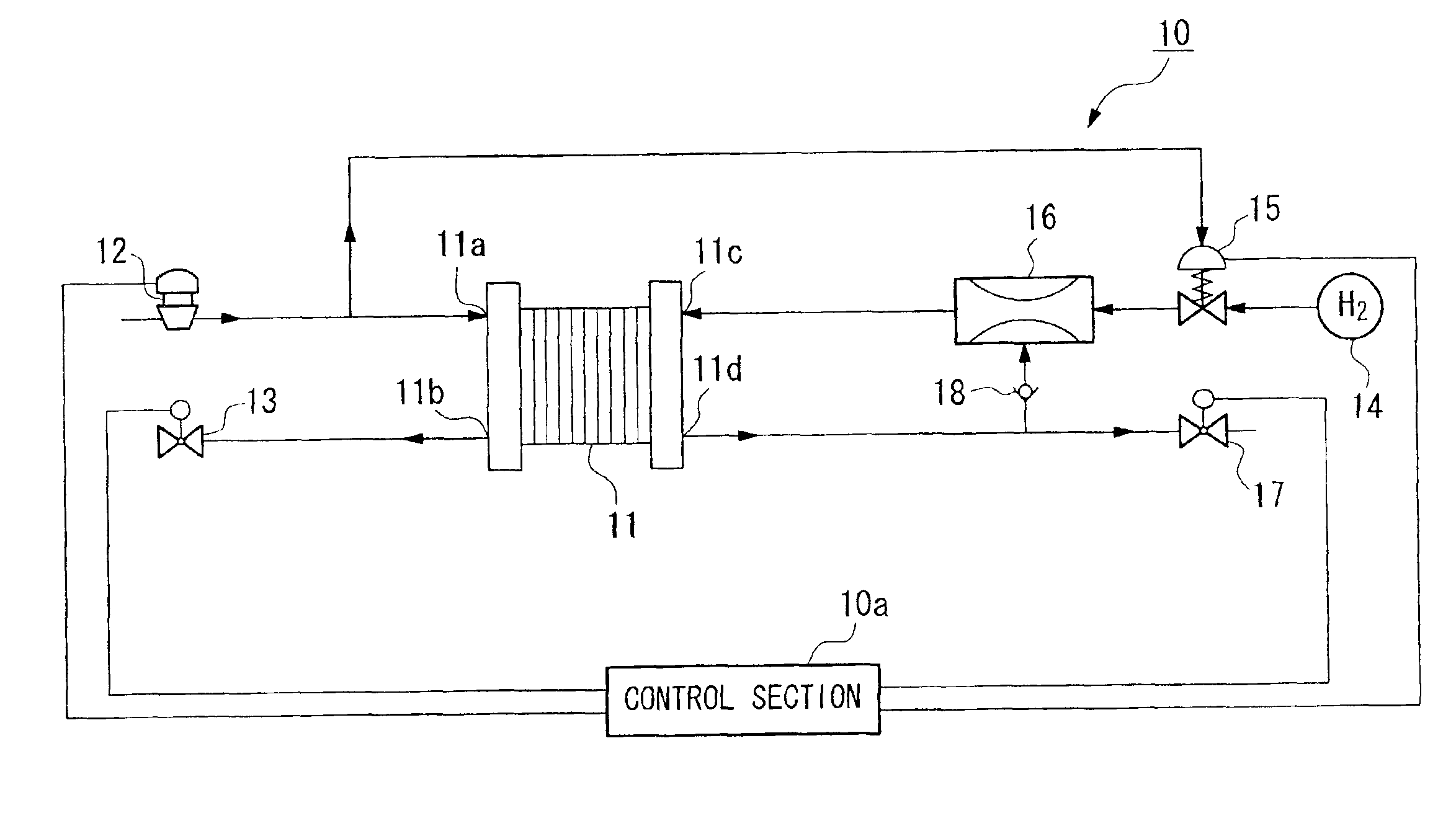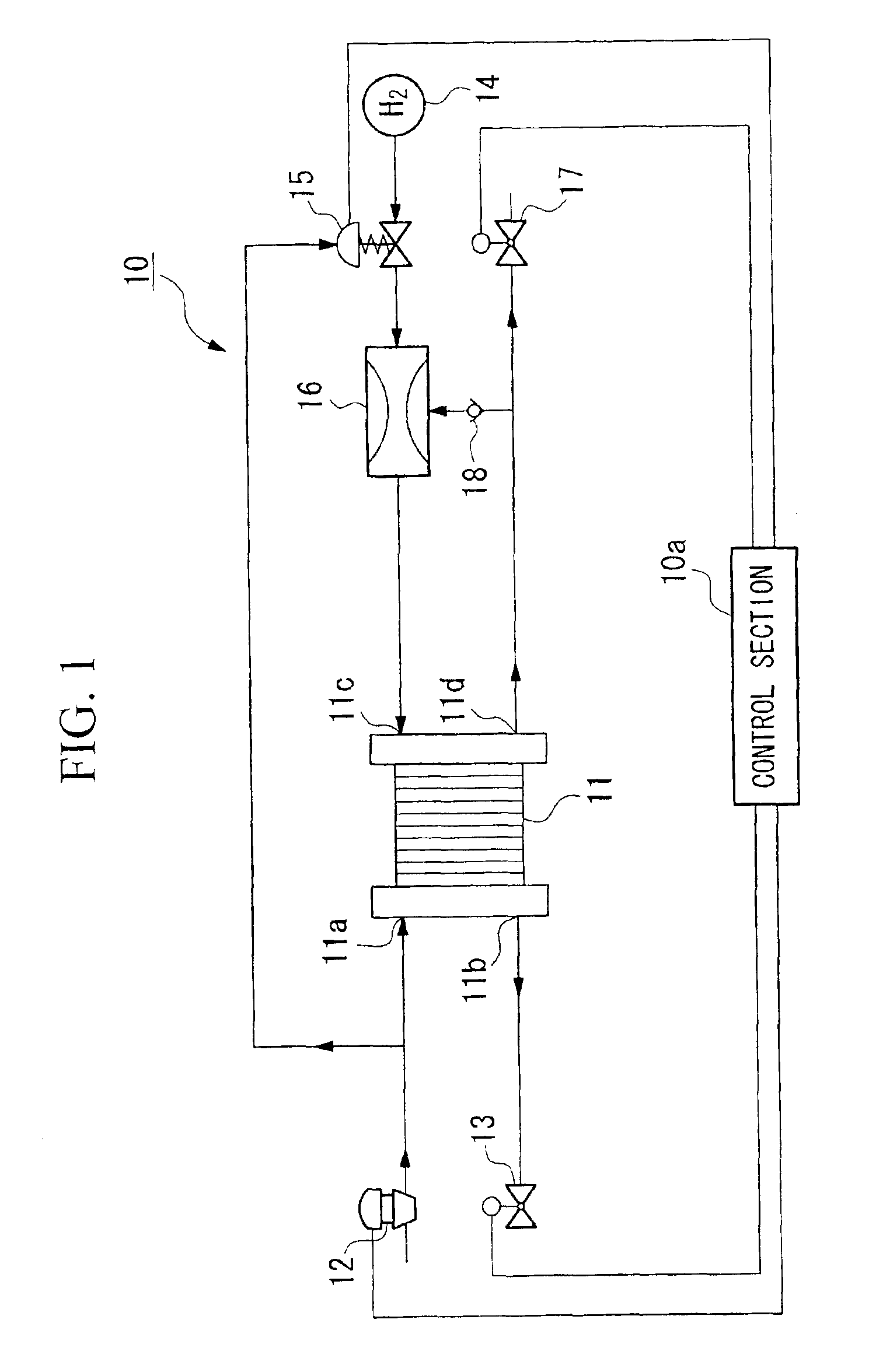System and method for draining remaining water in fuel cell
a fuel cell and system technology, applied in the direction of transportation hydrogen technology, chemistry apparatus and processes, electrochemical generators, etc., can solve the problems of difficult fuel cell restart, complicated system structure, and damage to solid polymer electrolyte membranes, so as to achieve the effect of easy draining and sudden increase of the flow velocity of reaction gas in each gas passag
- Summary
- Abstract
- Description
- Claims
- Application Information
AI Technical Summary
Benefits of technology
Problems solved by technology
Method used
Image
Examples
Embodiment Construction
[0032]Hereinafter, the structure of the system for draining remaining water in a fuel cell as an embodiment of the present invention will be explained with reference to the drawings. FIG. 1 is a diagram showing the structure of the system (10).
[0033]That is, the remaining water draining system 10 according to the present embodiment is built, for example, in a vehicle such as an electric car. The system comprises a control section 10a, a fuel cell 11, an air supply section 12, a back pressure valve 13, a fuel supply section 14, a fuel supply side pressure control section 15, an ejector 16, and a discharge valve 17. The control section 10a controls the operation of each section which connected to the control section 10a.
[0034]In the fuel cell 11, each unit cell has an anode and a cathode which are provided on either side of a solid polymer electrolyte membrane which may be a solid polymer ionic exchange membrane. A plurality of the unit cells are stacked so as to form a stack. The fu...
PUM
| Property | Measurement | Unit |
|---|---|---|
| pressure | aaaaa | aaaaa |
| pressure | aaaaa | aaaaa |
| flow rate | aaaaa | aaaaa |
Abstract
Description
Claims
Application Information
 Login to View More
Login to View More - R&D
- Intellectual Property
- Life Sciences
- Materials
- Tech Scout
- Unparalleled Data Quality
- Higher Quality Content
- 60% Fewer Hallucinations
Browse by: Latest US Patents, China's latest patents, Technical Efficacy Thesaurus, Application Domain, Technology Topic, Popular Technical Reports.
© 2025 PatSnap. All rights reserved.Legal|Privacy policy|Modern Slavery Act Transparency Statement|Sitemap|About US| Contact US: help@patsnap.com



